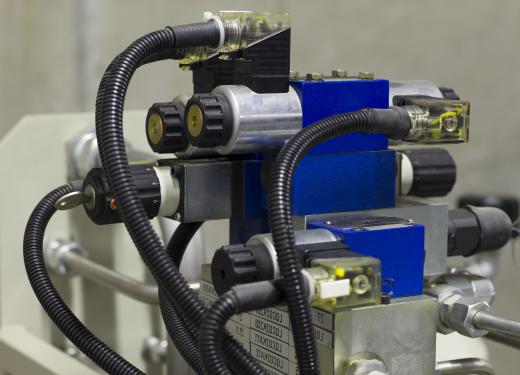A latching solenoid is a electromagnetic device designed to supply actuation force as is the case with a conventional solenoid, but to then keep the solenoid in the activated state without any electrical current applied to the coil. This is achieved by installing a set of permanent magnets around the bottom of the coil core. Once the magnetic field generated by the energized solenoid coil has pulled the plunger into the coil center, the power is cut to the coil. Usually this would release the plunger, but, in the case of a latching solenoid, the magnets keep the solenoid activated with no current drain at all from the power source. When the solenoid needs to be deactivated, a pulse of current is applied to the coil in the opposite direction to the actuation current that repels the plunger, thereby deactivating the solenoid.
Solenoids are one of the most common short stroke electromagnetic actuators in general use. They are typically very simple devices and consist of a static, hollow wire coil and a spring-loaded ferrous metal plunger. When an electric current is applied to the coil in the correct polarity orientation, a strong magnetic field is created around the coil. This pulls the plunger towards and into the coil core, rapidly supplying the switching or actuation movement in the process. Cutting the power to the coil causes the magnetic field to collapse, releasing the plunger, which is pulled back to the neutral position by the spring.

When the solenoid is required to remain active for a protracted period, the power to the coil can be left on until the solenoid requires deactivation. Although this works, it causes the coil to generate considerable heat and wastes electricity. The latching solenoid addresses this problem with the inclusion of a set of permanent magnets arranged around the coil at the point where the plunger comes to rest at the end of its activation stroke. These magnets are strong enough to hold the plunger in place, allowing the latching solenoid to remain active even if the coil power is cut off. This prevents the coil from overheating and makes the solenoid more cost effective in terms of electrical consumption.
When the latching solenoid needs to deactivate, a short pulse of electrical current is fed to the coil with a opposed polarity orientation to the activation current. This creates a brief opposed magnetic field that repels the plunger just far enough for the magnets to cease having an effect, allowing the spring to pull the plunger back to its neutral position. This operating method requires a slightly different type of solenoid controller capable of producing the required reverse polarity current pulse.
